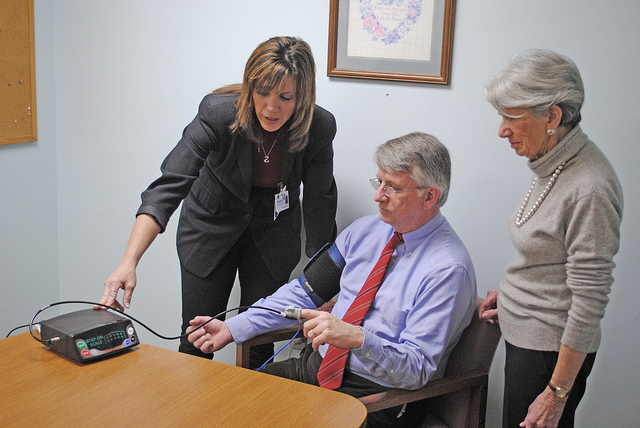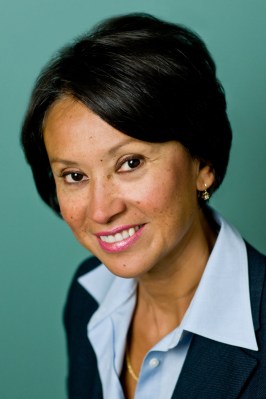
This is a guest post by health executive Alicia Torres
Advancements in medicine and treatments have increased the life expectancy for baby boomers. Almost 87 million Americans, or one in four, will be 65 or older by 2050, according to the Organization for Economic Cooperation and Development.
Both these trends have many implications for hospitals and healthcare organizations. Over the next decade, the healthcare system will need to adapt to the influx of baby boomers, many of whom will have chronic diseases and need continued care. A recent study by the West Virginia University School of Medicine found that about 39 percent of baby boomers were obese, compared to about 29 percent of the previous generation, and approximately 16 percent had diabetes, compared to 12 percent of the previous generation.
The aging generation of baby boomers had been a concern for the healthcare industry for some years. Now, technology solutions are beginning to serve a vital role in creating the change needed to propel the healthcare industry to care for the influx of patients.
Healthcare technology today
Technology implementation in healthcare today is mainly driven by government incentives. In 2009, the first electronic health record (EHR) mandates were enacted by the HITECH law and included financial incentives provided by the Health and Human Services Departments.
EHR implementation has taken off over the last few years, with nearly $10 billion in EHR incentives distributed as of December 2012. One of the core reasons hospitals and healthcare providers are adopting EHRs is to improve patient safety. While there are other benefits, such as saving time and cost, the objective of EHRs is to correctly identify patients through the continuum of care, ensuring procedures and check-ups are being recorded, as well as easing medical administration.
In order for that to happen, the EHR solutions need to fit seamlessly into the healthcare practice’s existing software solutions and infrastructure. Barcode technology creates a critical link between the patient and the clinician. If, for instance, a patient is unable to verbally identify himself or his medical problems, a clinician can scan a barcode wristband and have access to that patient’s EHR immediately, which can inform the course of action. The clinician spends less time tracking down patient records, and more time with the patient.
EHR and barcode technology implementation seamlessly links patients and clinicians; however, it is only the beginning for healthcare technology.
Connecting patients, clinicians and data
In an effort to provide the best care while adapting to the influx of baby boomers, hospitals and healthcare organizations are turning to connected health. Connected health is the idea of providing healthcare services remotely, through flexible, at home care. Managing chronic diseases, maintaining health and wellness, or ensuring patients are not readmitted following hospital treatment are all issues that connected health helps to solve. Additionally, with more patients being treated in their homes, we can decrease the amount patients admitted to hospitals.
Connected health can help solve the impending issue of the influx of baby boomers into the healthcare system, and technology is at the center of it, powering interoperability and linking patients to clinicians to their data. By leveraging technology solutions, healthcare organizations can provide care to patients outside of the typical medical setting, consulting at home, over the phone or via video. In using technology while caring for a patient, clinicians have immediate access to the patient’s medical history, pulled from the hospital IT system, and can direct the course of treatment in real-time.
Connected health also allows clinicians to use mobile devices to deliver care or information to a patient on the spot. This is known as mobile health, or mHealth. By using tablets, mobile printers and other point-of-care solutions, clinicians can take specimen collections, issue medical or dietary information and print prescriptions. In tandem with these activities, clinicians record their course of action, medications administered, patient status and next steps. The collected information is priceless data for hospitals and healthcare organizations. In analyzing this data, new processes or improved efficiencies are discovered; all the while elevating the quality of care a patient receives.
What to expect in the future
As connected health begins to take off, the Internet of Things (IoT) will play a larger role in healthcare information technology. Based on the definition shared in the survey “Building Value from Visibility: 2012 Enterprise Internet of Things Adoption Outlook,” 85 percent of organizations surveyed agree that Internet of Things solutions are made up of smart interconnected devices that provide more visibility into the organization’s operational events.
For healthcare, this means better visibility inside hospitals and healthcare organizations, as well as outside the typical medical setting and in the home. More importantly, IoT can provide more visibility into a patient’s status.
As seen at this year’s Consumer Electronics Show, broader IoT adoption is in full swing. In fact, 53 percent of organizations are planning to implement an IoT solution in the next 24 months, according to “Building Value from Visibility.” The healthcare industry has an even more aggressive adoption rate, with almost 60% of healthcare organizations planning to implement IoT solutions within the next two years. The gained benefits from IoT adoption that healthcare respondents noted include improved delivery process (72 percent), improved safety (66 percent), supply chain visibility (63 percent) and loss prevention (63 percent).
There are already startups developing IoT solutions for healthcare organizations specific to certain areas of inventory management and patient check-in. In the future, IoT has the ability to elevate healthcare even more, and specifically, connected health practices. Patient wristbands, medical equipment and beds encoded with sensors can track status in real-time and make hospital workflow processes more efficient. Health monitors, sensors and RFID technology at one’s home can transfer data to the hospital every minute. Hospitals and healthcare organizations will be able to consistently monitor and provide care, even if clinicians are not working with a patient in-person.
We have the opportunity to change the healthcare industry and evolve with the aging population. With the right solutions and infrastructure, technology can deliver on one of the healthcare industry’s biggest goals: providing the best care possible and creating a safe environment for patients.
 Alicia Torres is the healthcare global practice leader for Zebra Technologies Corporation, a recognized global leader in technologies that extend real-time visibility into business operations. At Zebra, Alicia is responsible for expanding the global healthcare market with new and existing solutions for customers.
Alicia Torres is the healthcare global practice leader for Zebra Technologies Corporation, a recognized global leader in technologies that extend real-time visibility into business operations. At Zebra, Alicia is responsible for expanding the global healthcare market with new and existing solutions for customers.
Alicia has over 25 years of experience in the healthcare industry, with positions including a hospital financial executive, an internal strategy consultant for a large, public healthcare company and a successful entrepreneur. In 1997, she founded Rosebud Solutions, a healthcare software firm that offered five software programs to address various areas of operations within hospitals. Prior to founding Rosebud Solutions, Alicia was the director of the health economics group at Kinetic Concepts Inc., whose products provide wound healing therapies and technologies. Alicia earned a bachelor’s degree in business administration from the University of Texas at Pan. For more information please visit www.zebra.com.
photo credit: The Community Foundation of Herkimer & Oneida Cos. via photopin cc
VentureBeat's mission is to be a digital town square for technical decision-makers to gain knowledge about transformative enterprise technology and transact. Learn More
